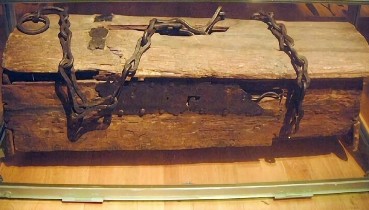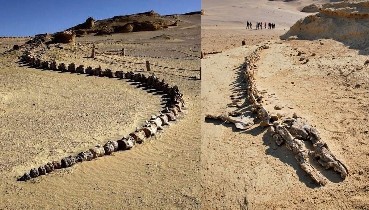

1000 Years Ago, a Viking Lost His Chest – Here’s What Was Inside
It must have been a terrible day for the Viking craftsman. He lost all his equipment while traveling across a lake in present-day Sweden.

In 1936, farmer Hugo Kraft was working on his field when his plow hit something hard which turned out to be a peculiar chest enclosed by an iron chain. Inside, he discovered the most extensive assortment of tools from the Viking Age (793–1066) ever found, including iron working and carpenter’s tools, raw materials, and unfinished products.
In the era of the Vikings, the location of Mästermyr mire on the island of Gotland, where Kraft found the chest, was a lake that was eventually drained between 1902-1910. The majority of the discovered artifacts were contained within the chest, but additional objects such as three bronze cauldrons, three bells, and an iron fire-grid were found in close proximity to it.

The chest, which is 90 cm (35.04 inches) long, 26 cm (10.24 inches) wide, and 24 cm (9.45 inches) high, was secured with a chain comprised of 26 figure-of-eight shaped links, which served as both a supplementary lock and handle due to the chest’s excessive weight for its original handle.
It is believed that the chest and its accompanying items may have been placed on a boat that capsized and sank in the lake. However, another hypothesis proposes that it was temporarily hidden along the water’s edge.

The Viking craftsman likely experienced a devastating loss when all of his equipment was misplaced during his journey across Lake Mästermyr. The chest yielded an impressive collection of 200 items, including hammers, axes, saw blades, knives, tongs, punches, plate shears, files, rasps, drills, chisels, awls, and whetstones. In addition to the tools, the chest also contained raw materials, scrap iron, and a variety of finished objects such as locks, keys, a frying pan, cauldrons, and bells.
Despite being over a millennium old, the tools from the Viking Age have a striking resemblance to contemporary tools in terms of their composition, design, and utility – which is by no means a coincidence. They actually resemble early Roman tools that spread throughout Europe as the Roman Empire expanded, with the ensuing trade carrying innovative concepts and craftsmanship to regions far from Rome.

Based on the items found within the chest, it can be inferred that the container belonged to a traveling craftsman who engaged in both repair work and the creation of novel objects. The assortment of tools suggests that the person was skilled in both blacksmithing and carpentry, in addition to possessing a basic understanding of locksmithing, coppersmithing, and coopering.
The discovery of his tools serves as a remarkable testament to the Viking Age and its skilled craftsmen.
Recommended Videos
 Wild Animals From Up Close: 60 Portraits By This Photographer2806 views
Wild Animals From Up Close: 60 Portraits By This Photographer2806 views Beautiful Butterfly eggs “Nymphalis Antiopa"347 views
Beautiful Butterfly eggs “Nymphalis Antiopa"347 views-
Advertisements
 12,000 years ago, China Was Inhabited By Mysterious Egg-Headed People!89 views
12,000 years ago, China Was Inhabited By Mysterious Egg-Headed People!89 views Stunning New Footage Shows Mysterious Giant Deep-Sea ‘Phantom’ Jelly As Never Seen Before1845 views
Stunning New Footage Shows Mysterious Giant Deep-Sea ‘Phantom’ Jelly As Never Seen Before1845 views Kandalama Hotel Camouflaged by Nature in Sri Lanka482 views
Kandalama Hotel Camouflaged by Nature in Sri Lanka482 views There Is A Flower That Has Petals That Look Like Little Hummingbirds91 views
There Is A Flower That Has Petals That Look Like Little Hummingbirds91 views Are Sea Bunnies Poisonous? Everything You Need To Know About These Confusingly Cute Creatures114 views
Are Sea Bunnies Poisonous? Everything You Need To Know About These Confusingly Cute Creatures114 views 10 Weird Beauty Standards Throughout History That You Won’t Believe Were Real3911 views
10 Weird Beauty Standards Throughout History That You Won’t Believe Were Real3911 views



